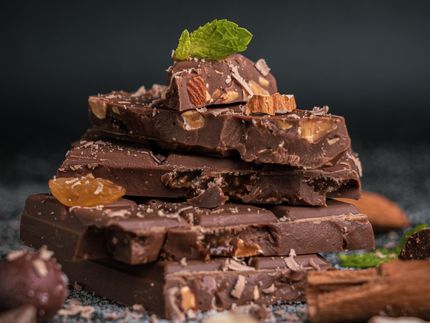56% of urban Chinese ice cream consumers eat ice cream to indulge
Advertisement
Gone are the days when consumers viewed ice cream as just a summer treat; instead, it is now seen as an indulgent treat that can be eaten year round. Latest research from the world’s leading market intelligence agency Mintel shows that more than half (56%) of urban Chinese respondents who are consumers of ice cream eat it to treat or indulge themselves.

symbol image
Photo by Mark Cruz on Unsplash
Mintel research reveals that the ice cream shops market in China grew 14% to reach an estimated RMB41 billion in retail sales value in 2018. What is more, Mintel predicts the Chinese ice cream shops market to grow further at a CAGR (compound annual growth rate) of 11.9% to reach RMB71 billion in the five years to 2023.
Despite this growth, ice cream has the lowest penetration rate among Chinese respondents when compared with Chinese and Western desserts; 22% of Chinese respondents haven’t had ice cream in the last 12 months*, while just 12% have not had Western desserts and a mere 8% have not had Chinese desserts. Moreover, over a tenth (12%) of Chinese respondents say they are heavy users** of Chinese and Western desserts, respectively, while just 3% are heavy users of ice cream.
Meanwhile, the overall dessert shops market*** in China grew 12.9% in 2018, reaching RMB228 billion in value; this is slower than the category’s 18.5% growth in 2017. Mintel forecasts that the Chinese dessert shop market will grow at a 10.8% CAGR in the next five years, to reach RMB379 billion in 2023.
Belle Wang, Associate Food and Drink Analyst, Mintel China Reports, said:
“The growth we’re seeing in China’s ice cream shop market is driven by changes in consumption habits. Today’s consumers no longer see ice cream as only a summer treat, but as a dessert or snack that can be eaten all year long. Instead of having ice cream to cool down, consumers are eating it to indulge and treat themselves. In addition, ice cream brands are altering their business strategies to encourage more sales, from targeting younger consumers to introducing low-calorie ice cream. All that said, Western and Chinese desserts are still more popular among Chinese consumers. In this light, ice cream stores should add more variations to their mix, like adding Western desserts, to encourage consumers to visit.”
“On the whole, the overall dessert shop market in China will continue to be impacted by other types of businesses in the foodservice market, like coffee houses and tea shops. These companies are leveraging their advantages, including the fact that tea shop and coffee drinks pair well with desserts—thereby encouraging them to introduce desserts to their menus.”
Potential lies in after-meal occasion
To compete with other foodservice businesses, dessert shops in China can focus on the after-meal occasion and develop more after-meal desserts. According to Mintel research, half (49%) of the respondents who consume desserts say that they have desserts after meals. Moreover, females are more likely than males to have after-meal desserts (51% of females vs 47% of males), particularly females aged 18-24 (59%).
Of all respondents who have desserts after a meal, as many as three in five say they have desserts after having meals in order to try new flavours (62%) and treat or indulge themselves (61%).
“The after-meal occasion holds great potential for China’s dessert shops market, especially with young females. The popularity of having desserts after meals is driven mainly by how Chinese consumers are influenced culturally by the West. Dessert shops should regularly update their menus as well as highlight their indulgent offerings. Leveraging the popularity of the after-meal occasion, dessert shops could also consider expanding their menus to include meal options instead of just desserts. With this, dessert shop brands would be tapping into more consumption occasions, driving sales as a result.” Belle continued.
Overcoming health concerns
Eating desserts is often associated with being unhealthy; to mitigate this worry, dessert shops can look into developing healthier options. As many as 61% of dessert consumers in China are willing to pay more for desserts that are all-natural or free-from additives, while more than half (54%) are willing to pay more for desserts that are high in nutrition (eg protein, probiotics).
Finally, almost two-thirds (64%) of dessert consumers are interested in trying ice cream that incorporates seasonal fruits (eg pomegranate, grapefruit) and 56% are keen on trying cake desserts with seasonal fruits. Mintel research also reveals that 43% of dessert consumers in China, respectively, are interested in trying ice cream as well as cake desserts with superfoods (eg chia, hempseed, avocado).
“The use of natural ingredients is becoming more and more important in the food and drink industry overall, including the indulgent dessert category. In fact, our research shows that consumers are willing to pay more for options with natural ingredients. With health and wellness mainstreaming in urban China today, dessert shop brands can look into using more natural ingredients like seasonal fruits and superfoods. As well, they can consider developing more offerings that are high in protein, or even probiotics seeing as Chinese consumers like having desserts after their meals.” Belle concluded.
*3,300 urban Chinese internet users aged 18-49, February 2019
**Consumption frequency of at least once a week or more
***Includes ice cream and desserts shops and excludes tea shops, coffee houses and bakery shops.



























































